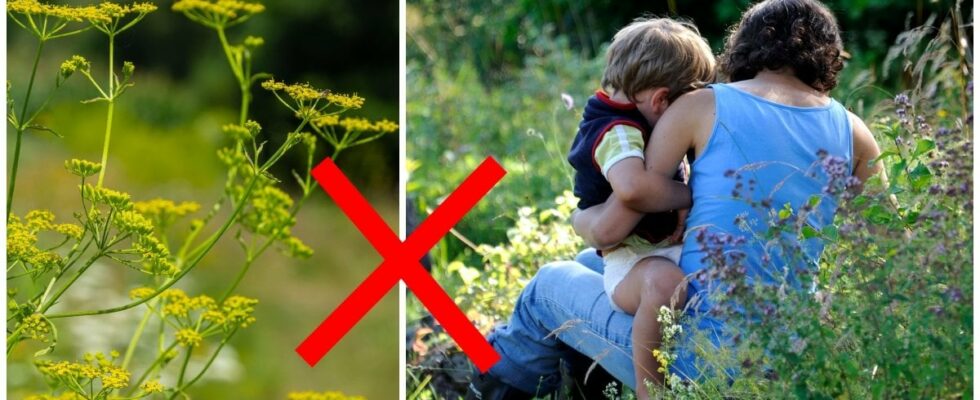Summer is finally here with all that that means: brighter evenings, higher temperatures and more lush vegetation.
This means that more and more people are staying out in nature. But there are certain plants you have to watch out for in order to come into contact with – and even more to pick.
READ MORE: Watch out for the plant with deadly poison – found at Swedish bathing sites: “Life-threatening”
Photo: Magnus Hjalmarson Neideman/SvD/TT
DO NOT MISS: LIST: Here are Sweden’s deadliest plants
Skin irritants on wild parsnip
One such plant is the parsnip, which is grown by many in gardens. The wild variety of parsnip grows, according to The National Association of Leisure Cultivation, mainly in the southern parts of Sweden and is common in Denmark. However, it occurs all the way up to Norrland.
During the wild parsnip’s first year the root develops and during the second year the flower stalk shoots up from the previously mentioned root. And it is precisely this stem and the foliage that then grows that are actually poisonous.
– The whole plant contains substances that are skin irritants, and above all if it then comes into contact with sunlight, explains Hilda Phanpharmacist at the Poison Information Centre, for News24.
– Common symptoms, which can last a few hours to a few days, can be red and irritated skin which can then cause blisters that can hurt.
Photo: Stella Pictures”Important to wash with soap”
What should you do if you come into contact with the plant?
– It is important to wash thoroughly with soap and water after handling wild parsnip, and then cover the area from the sun for a week or so afterwards, says Hilda Phan and continues:
– You can always call us in case of acute poisoning, we make an assessment for each individual incident. You can also contact the healthcare system, for example 1177 and the health centre, in case of symptoms.
This is how you recognize wild parsnip
But what does the wild parsnip look like? According to Fritidsodlingens Riksorganisation, it belongs to the same family as, for example, dog biscuits and kirskål, with which it can therefore easily be confused.
READ MORE: The flower you should NOT pick for the midsummer wreath: “Horrible burning blisters”
Wild parsnip, in Latin Pastinaca sativa. Photo: Stella Pictures
This is how you feel, according to State Veterinary Medical Institutionagain the plant:
DO NOT MISS: 6 super tricks when you’ve been burned by stinging nettles – relieves the pain and reduces the itching
